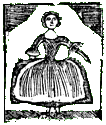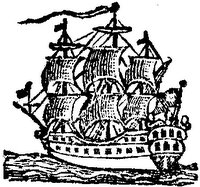Gordon S. Wood on Narrative History
Last month leading early American historian Gordon S. Wood wrote an essay for the Washington Post on the state of history writing today. He said:
Academic historians have not forgotten how to tell a story. Instead, most of them have purposefully chosen not to tell stories; that is, they have chosen not to write narrative history.Indeed, most professional historians use the term “narrative history” to mean a chronological telling of events, as opposed to other ways to extract meaningful information from the past: tracing different themes, for instance, or analyzing numbers.
Narrative history is a particular kind of history-writing whose popularity comes from the fact that it resembles a story. It lays out the events of the past in chronological order, with a beginning, middle and end.
I think that conception of “narrative” misses some of the key qualities that appeal to folks outside of the profession. “Narrative” has a more elaborate meaning for fiction writers, and specifically those who write within genres and/or for young readers—in sum, writers who have to create engaging plots.
When fiction writers discuss narrative, they’re not just thinking of one event after another (“The king died, and the queen died,” in E. M. Forster’s formulation). They’re thinking of an interesting plot with actors, interrelated events, and emotional meaning. That almost always requires:
- a protagonist or group of protagonists readers can follow—i.e., an individual person or small group of individuals. It’s harder to get emotionally involved with an entire population, however eye-opening the statistics may be.
- a goal that matters for that protagonist, whether it’s providing for her children or writing a constitution.
- obstacles or antagonists blocking the protagonist’s way to that goal.
- a resolution of the conflict for the protagonist, ideally growing out of forces or factors already established in the narrative.
Another popular form of history finds its narrative in the process of investigating the past. The author (or, on a television show, the host) is the protagonist, with the goal to find answers to defined questions. The historical investigator overcomes obstacles by unearthing obscure documents, interpreting difficult sources, and getting around preconceived notions. The resolution is a convincing answer to the original questions.
One interesting example of this form is leading early American historian Laurel Thatcher Ulrich’s A Midwife’s Tale—not the book, but the movie, written and produced by Laurie Kahn-Leavitt. The book doesn’t offer a strong narrative structure: it traces Martha Ballard’s life over many years, with many events but no unified plot or satisfying resolution, much like real life. In contrast, the movie creates a narrative by using Ulrich herself as the protagonist, seeking a way to find meaning in Ballard’s diary. The result is an engaging, as well as informative, story.
TOMORROW: And what’s wrong with that?
Thanks to PhiloBiblos for the link to Wood’s article.




